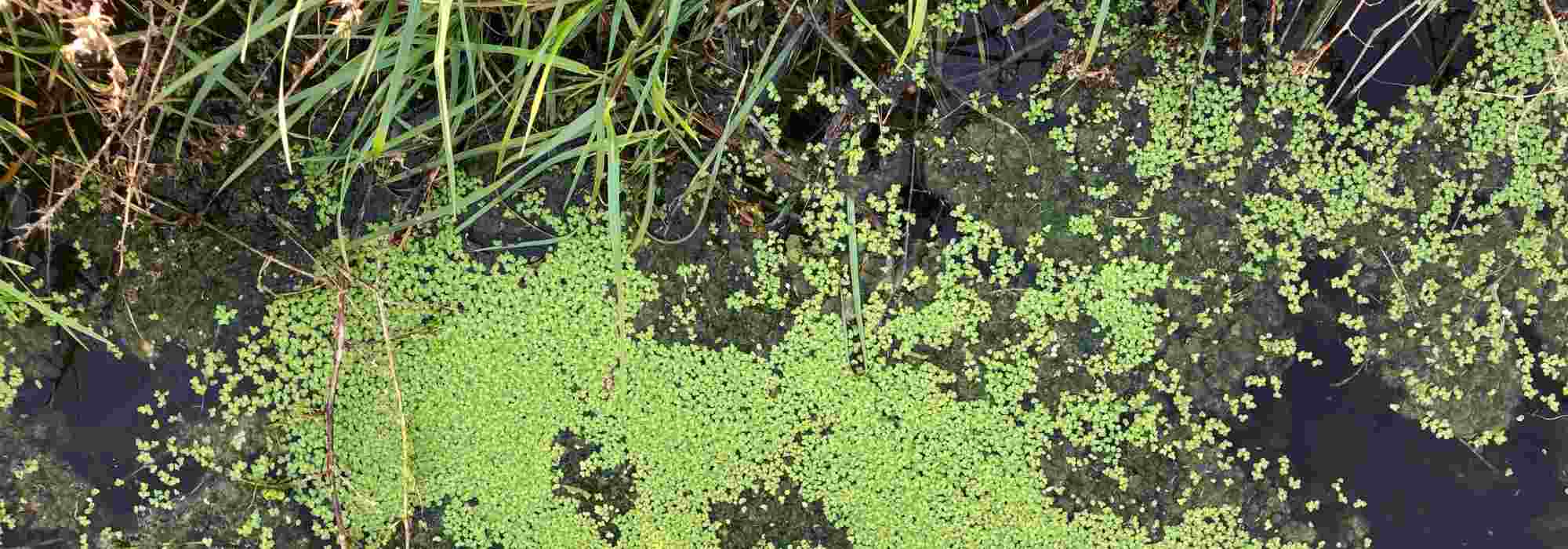
Combatting green and filamentous algae in the pond
Understand, anticipate, and combat their emergence.
Contents
For enthusiasts of aquatic gardens, green filamentous algae are certainly the biggest source of trouble. They can “choke” the pond and greatly harm its aesthetics, as they are a classic sign of an imbalance in the aquatic medium. To get rid of them, it is essential to first understand how this delicate ecosystem, the natural pond, functions.
Discover the reasons for the appearance of algae in the garden pond and our tips for effectively combating and controlling them.
Why am I overrun with algae?
Filamentous algae and suspended green algae (giving your water a “green soup” appearance) are part of the vegetable kingdom.
As such, they will need light, CO2, and nutrients to thrive in your water. When these plants visibly take over your pond, you should ask yourself several questions before resorting to environmentally harmful products, which are akin to putting a band-aid on a wooden leg.
It is important to remember that any body of water will inevitably have algae brought in by fish, wind, birds, etc. This is completely natural and normal.
They only become a problem in the case of a major imbalance in your water.
This imbalance can have several causes that can be relatively easily managed.
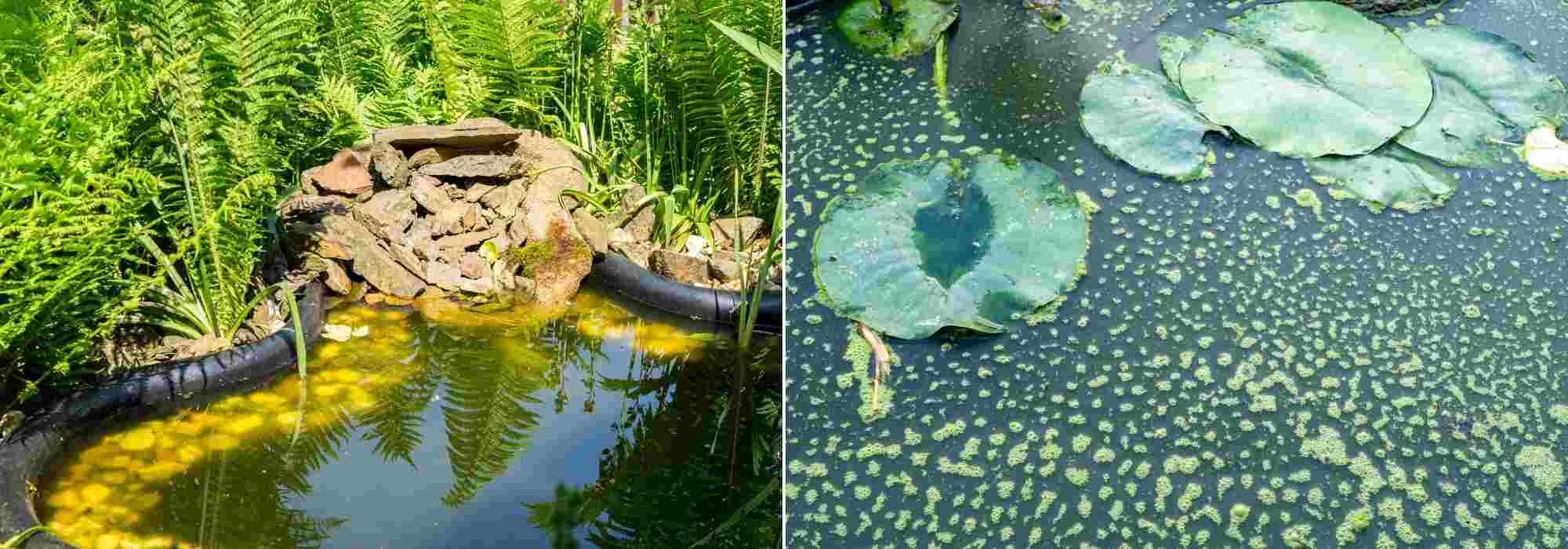
The main causes of green algae
- The pond is too exposed to sunlight: A common mistake is placing your water feature in full sun without any shade during the hot hours. This creates a favourable environment for algae proliferation, especially when your pond is young. Indeed, as long as other plants have not yet established themselves, algae will have no competition and will thrive.
- The pond is overcrowded with fish: A very common mistake is not calculating the number of fish according to the volume of water in your pond. This will result in an excessive input of nutrients enriching your water through fish waste. Nitrates and phosphates will be present in excess in the water and will fuel the algae!
- The pond is poorly (or not at all) planted: Green algae do not appreciate competition. If you do not provide them with competition for light or nutrients, they are likely to become invasive.
- The pond lacks a filtration system: Unnecessary if you do not place fish in your pond, it is, however, highly recommended if your water feature contains fish.
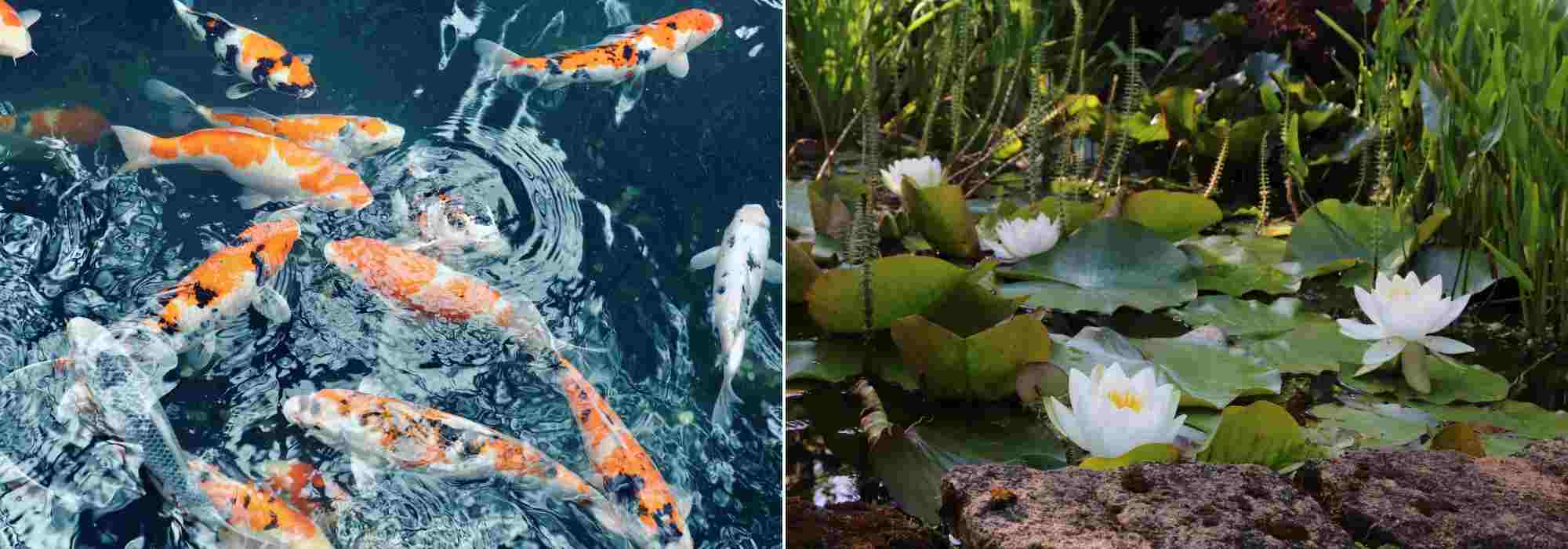
Overcrowded fish and too many plants can be enough to promote algae growth in the pond
How to combat green and filamentous algae?
The solutions are quite simple to implement but will require a bit of patience before seeing the first significant results.
Reduce Algal Density
- Shade the pond: Excess light and heat promote algal growth. If your water feature is positioned full south, you can rectify this by planting a small tree to the southwest of your pond. This will cool the water and limit light exposure in the afternoon while retaining morning sunlight. It is also possible to place umbrellas over your pond during the summer.
- Reduce the number of fish and food: A goldfish requires at least 60 litres of water to thrive… and nearly a cubic metre for a koi carp! It is not uncommon to see ponds completely overcrowded with fish. The addition of food enriches and saturates the water with nutrients (phosphates and nitrates). These nutrients cause algal populations to explode. Therefore, you need to calculate the volume of water and the number of fish your pond can accommodate. Avoid overfeeding them: any uneaten food will further enrich the pond water.
- Maximise vegetation in your pond before introducing animals: By placing several plant communities in your pond (submerged plants, marginal plants, floating plants, etc.), you will anticipate the arrival of algae. Reeds (Phragmites australis), bulrushes (Typha latifolia), hornworts (Ceratophyllum demersum), carex, and iris should be introduced before the fish. These plants will compete with algae for CO2, light, and especially nutrients, greatly limiting their proliferation.
- Maintain your pond: This involves preventing organic matter from entering the water. Remove tree leaves and decaying aquatic plants in autumn as winter approaches. This maintenance will prevent nutrient enrichment of the water and the algal bloom in the following spring.
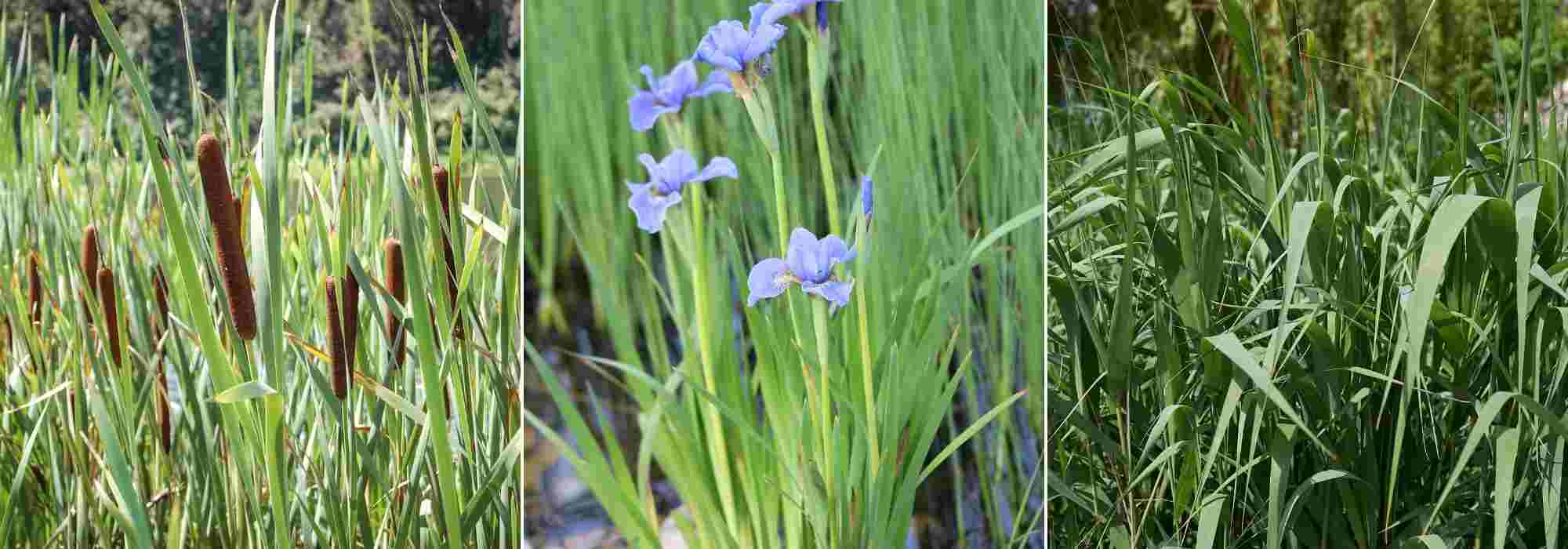
Typha latifolia, water iris, Phragmites australis: plants suitable for your pond
- Subscribe!
- Contents
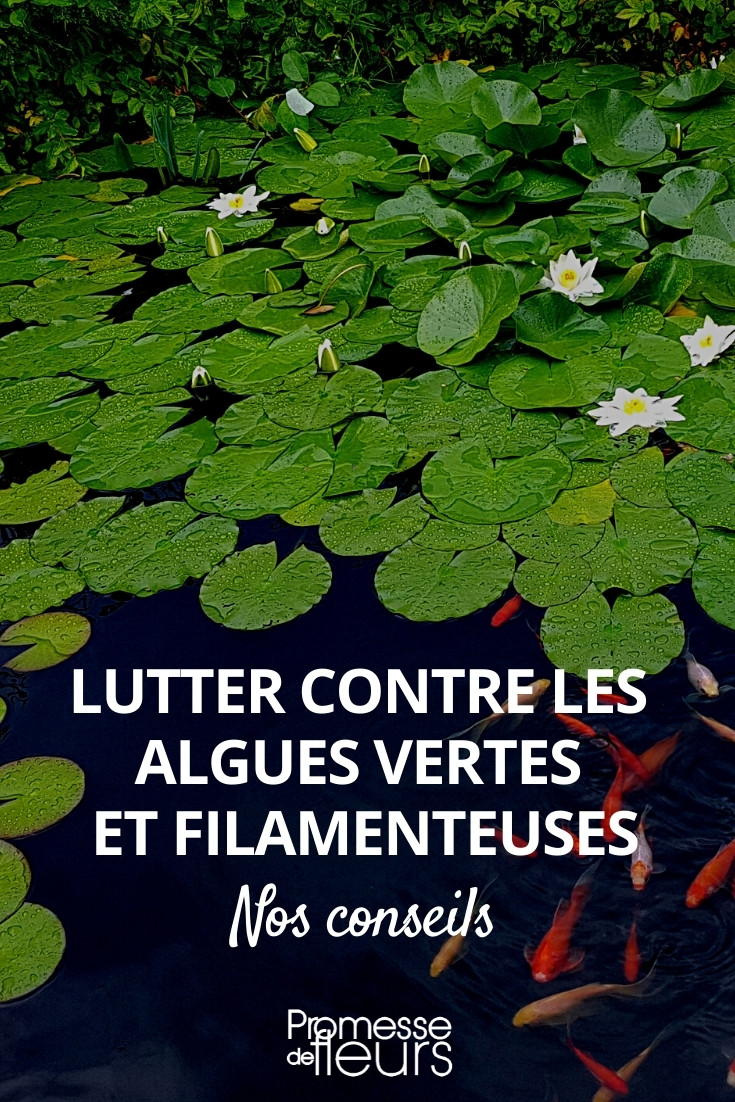































Comments